These items determined how your sickness will be
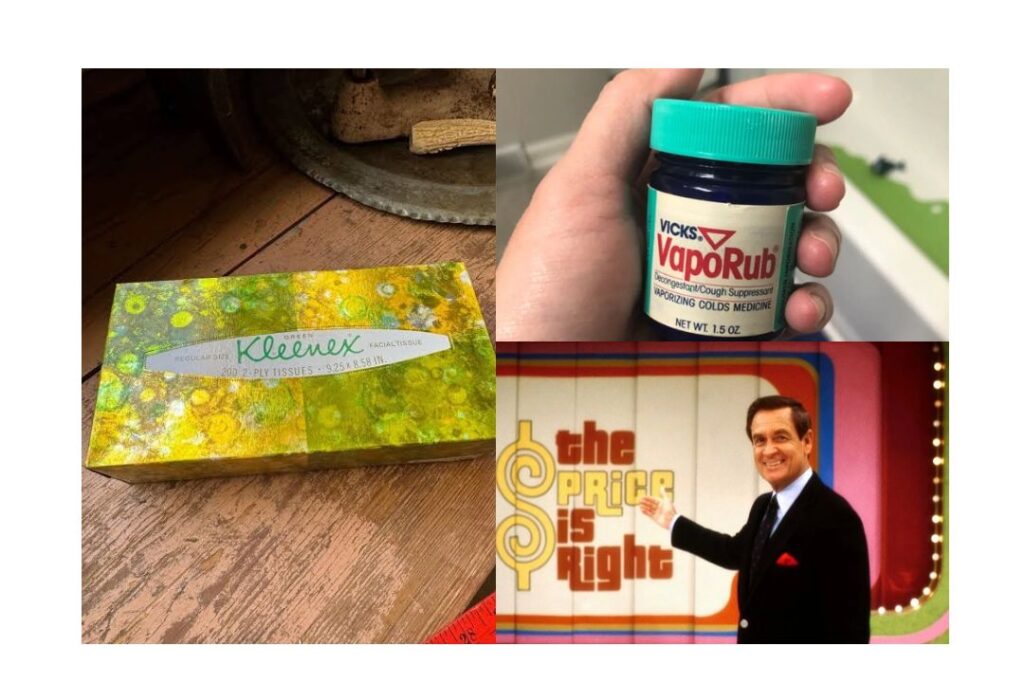
There was a secret language spoken only on a 1970s sick day: the muffled sound of daytime TV, the heavy scent of menthol, and the quiet hiss of a humidifier. If you grew up during this era, you know the feeling: the moment you realized you had a free pass from school. We’re opening the medicine cabinet and flipping past the soap operas to revisit the most distinct, comforting, and sometimes bizarre memories of those days spent recovering at home.
1. Sick Days Felt Both Special and Strange
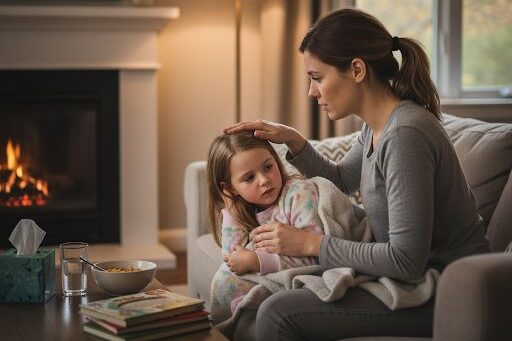
Waking up too tired for school meant the day instantly shifted. Pajamas stayed on, the house felt quieter, and the rhythm of a weekday without school carried both relief and a surprising touch of loneliness. It was a world apart from the usual morning rush of breakfast and bus waits. The normal rules of the house were suspended; the living room became a temporary bedroom, and the only scheduled activity was a check-in from Mom. This unique status, of being both pampered and slightly isolated, gave the day a dreamy, slow-motion quality. For many children, these moments of quiet recuperation offered a rare chance to simply be still, an experience often lost in the structured schedule of 1970s childhood. The smell of the blankets, the muted sunlight filtering through the curtains, and the knowledge that the whole world was moving on without you created a unique, indelible memory.
2. Moms Checked with the Back of Their Hand

Before thermometers came out, a cool palm pressed to your forehead was the first, definitive test. Moms swore they could instantly tell if a fever was brewing by simply using the back of their hand, a quick, intimate gesture rooted in generations of folk wisdom. This simple diagnostic check set the tone for the entire day. If the hand felt a slight warmth, the verdict was clear: stay home. Sometimes the decision felt like a gamble—was it a real fever, or just wishful thinking on the part of a tired child? Regardless, this gentle but firm gesture established the maternal authority over the sick day. It was a physical connection that communicated care before any medicine was dispensed, a ritual that every child recognized as the true starting gun for a day of convalescence. This method was not scientific, but it was deeply comforting, a signal that a watchful eye was now fully focused on your recovery.
3. Glass Thermometers Were an Ordeal
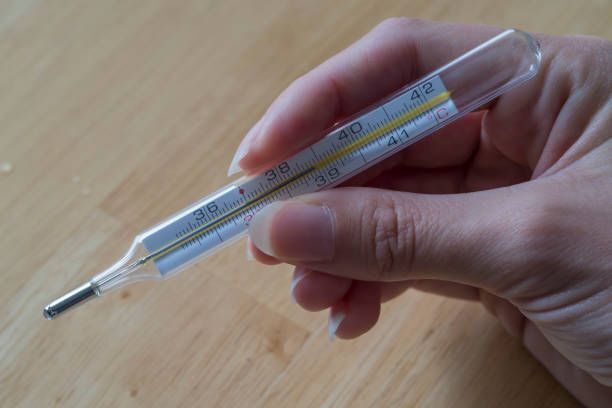
Slipped under the tongue, the glass thermometer was an essential, albeit unpleasant, part of a sick-day morning. Unlike today’s quick digital readings, this mercury-filled device required a several-minute period of absolute stillness, a difficult task for a restless child. Kids hated the metallic taste and the agonizing wait, often trying to distract themselves or cheat the reading by sipping a hot drink right beforehand. The tension was palpable as the child waited for the final, slow creep of the silver line. When the time was finally up, there was no beep or digital readout. Mom would squint, rotate the slender glass rod in the light, and declare the verdict with an authoritative finality. This moment was a small trial of patience, marking the official medical transition from “maybe sick” to “definitely sick,” adding a seriousness to the day that contrasted with the relief of missing school.
4. Vicks VapoRub Was the Magic Cure
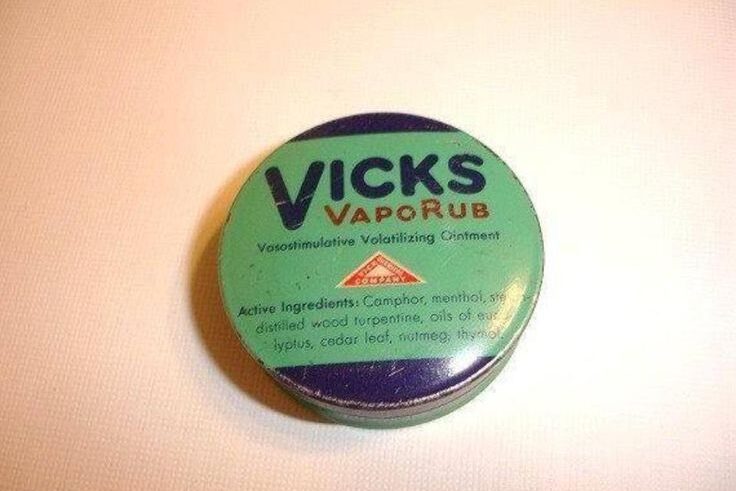
Mothers smeared the cool, mentholated jelly across chests and sometimes even under noses, swearing it was the ultimate decongestant and airway opener. Vicks VapoRub became the defining scent of a 1970s sick day. The overwhelming smell of camphor, eucalyptus, and menthol saturated the room, clinging to pajamas, blankets, and even the air itself. This ubiquitous ointment, created by pharmacist Lunsford Richardson in the late 19th century, was a staple in American homes, promoted as a powerful topical treatment for minor aches and cough suppression. For a sick child, it was a deeply sensory experience: equal parts a soothing coolness on the skin and a suffocating, powerful aroma. Its medicinal presence was deeply comforting, a sensory guarantee that active healing was taking place, and its iconic jar is now a potent, universally shared medicine cabinet memory.
5. The Humidifier Puffed Like a Tiny Steam Engine
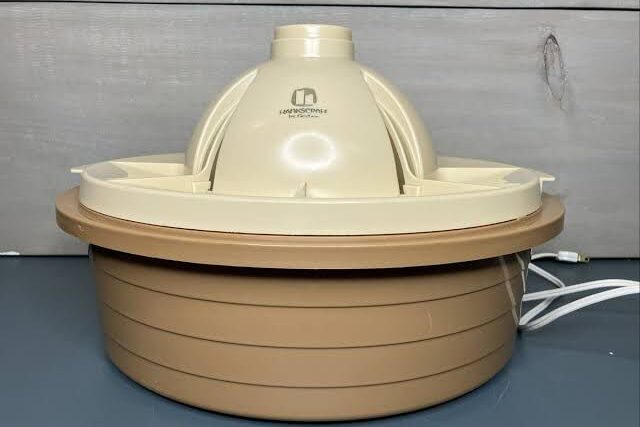
Placed near beds or couches, the humidifier, often a bulky, plastic model, became a fixture of the sick-room landscape. It hissed and gurgled softly, filling the air with a warm, moist mist. Sometimes, Vicks or a similar medicinal inhalant was added to the water, giving the steam a therapeutic scent. The concept behind using humidifiers, which dates back to early 20th-century home remedies, was to moisten dry nasal passages and ease coughs. For a child, the machine’s gentle, steady rhythm and the visual of the vapor curling upward were strangely mesmerizing and comforting. It hummed with the quiet authority of an appliance dedicated solely to your well-being, its repetitive, soft noise serving as a subtle, ambient soundtrack to hours of dozing. The sight and sound of that puffing machine became synonymous with the feeling of quiet, focused care.
6. Ginger Ale and Flat 7Up Soothed Stomachs
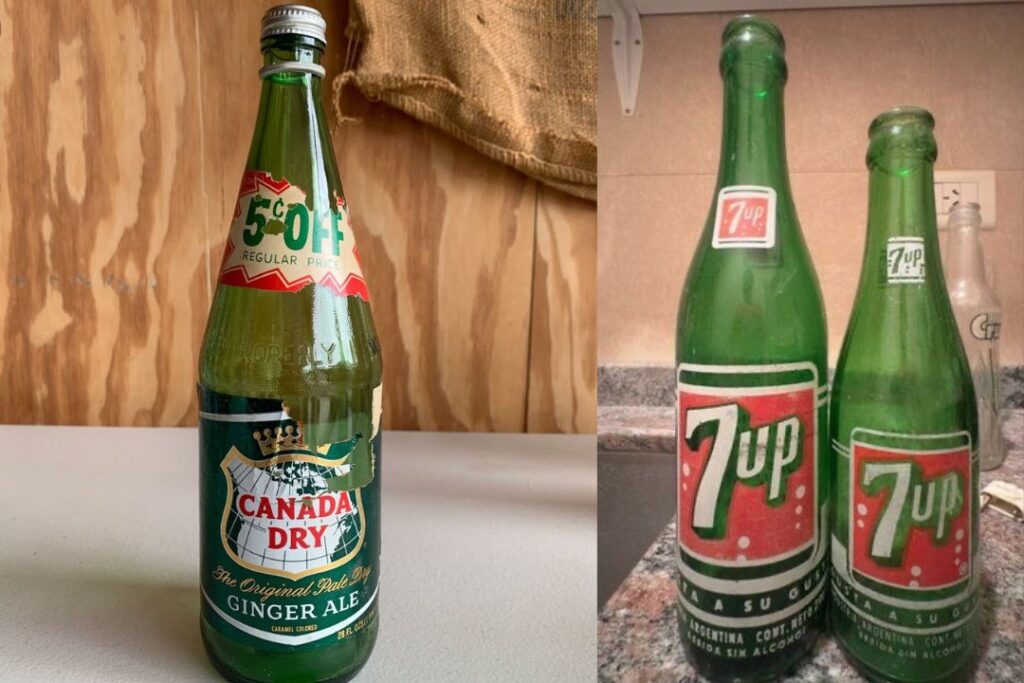
Sick-day kitchens always had bubbles waiting in either green or clear glass bottles. Before the era of constant sports drinks, ginger ale and 7Up (or other similar lemon-lime sodas) were the official, non-medicinal prescription for upset stomachs. Moms insisted on the ritual of “flattening” the soda, stirring the fizz out with a spoon before serving, believing that the bubbles would exacerbate nausea. This advice had a kernel of truth, as excess carbonation can cause bloating. Paired with plain saltine crackers, these sweetened drinks became the universal, trusted remedy for queasy kids everywhere. The syrupy sweetness and the cool temperature offered a pleasant contrast to a sensitive palate, and the act of slowly sipping a glass became a core component of the recovery routine.
7. Chicken Noodle Soup Was the Comfort Meal
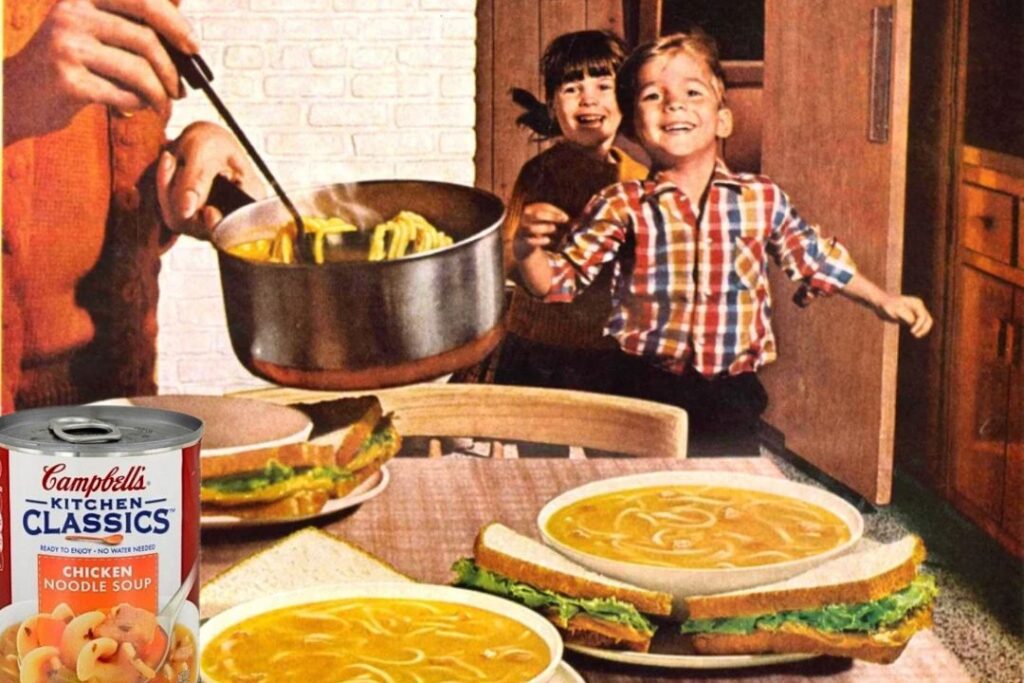
Campbell’s cans—instantly recognizable by their iconic red and white labels—clinked onto stovetops across the country. Chicken noodle soup was the undisputed comfort food champion of the sick day. While homemade versions existed, the ready-made canned soup, a staple since the late 19th century, was the quickest and most reliable offering. As steam rose from the golden broth, the salty, savory flavor and soft noodles felt genuinely medicinal. Scientists have even studied the effect, finding that chicken soup may modestly ease congestion and mild upper respiratory tract infection symptoms. Whether you could manage a full bowl or just sipped the warm broth, the soup felt like a symbol of care, a tangible expression of love and healing wrapped in a familiar, comforting package. It was more than food; it was a deeply ingrained cultural remedy.
8. Saltines Were the Sick-Day Staple
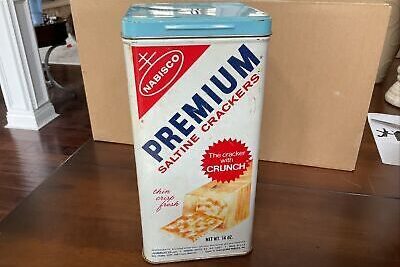
Plain, square, and famously crumbly, saltine crackers were the official, non-prescription antidote for sensitive stomachs. They sat stacked on napkins beside the couch, often paired with the aforementioned flat soda. Saltines are primarily made of flour, water, and baking soda, a simple composition that makes them easily digestible and useful for absorbing stomach acids. They were the most inoffensive food available, and their neutral flavor was often the only thing a nauseated child could tolerate. The inevitable scattering of crumbs into blankets and sofa cushions was simply accepted as part of the sick-day environment. While frustrating for parents to clean up later, the crackers’ presence was a silent acknowledgment of the child’s fragile state, serving as the universal, bland currency of childhood illnesses.
9. Sick Days Turned Living Rooms into Nests
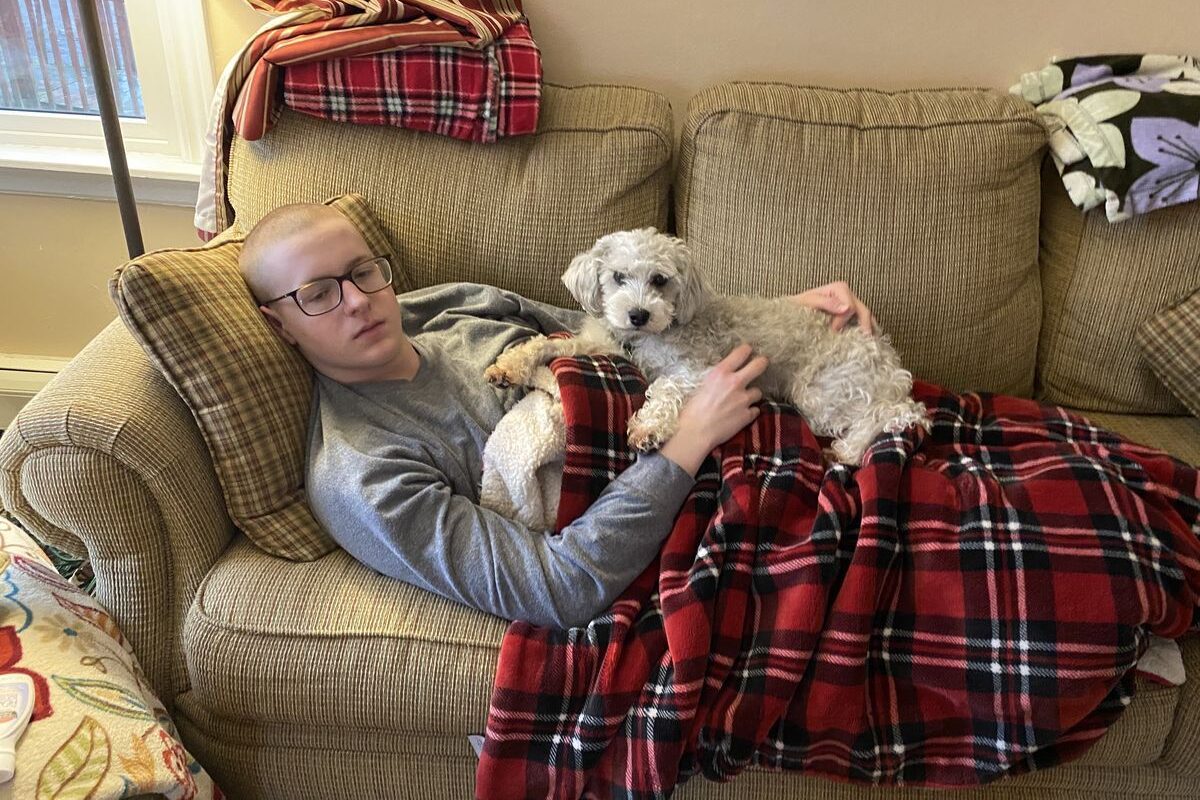
With a patient confined to the couch, the living room transformed from a formal, family gathering space into a personal, temporary recovery nest. This ritual involved a meticulous layering of blankets, pillows, and a carefully chosen selection of stuffed animals. Kids burrowed into this makeshift fort, half-watching TV and half-dozing in the soft, slightly disheveled surroundings. This couch territory became an officially sanctioned space for rest and minimal effort, a break from the usual expectation to sit upright or keep things tidy. The perimeter of this fort was often guarded by vital sick-day supplies: a box of tissues, a cup of flat soda, a stack of comic books, and a bag of cough drops. This safe, comfortable space was crucial; it physically signaled a suspension of normal activity, allowing the child to fully focus on healing.
10. Daytime TV Was Your Constant Companion
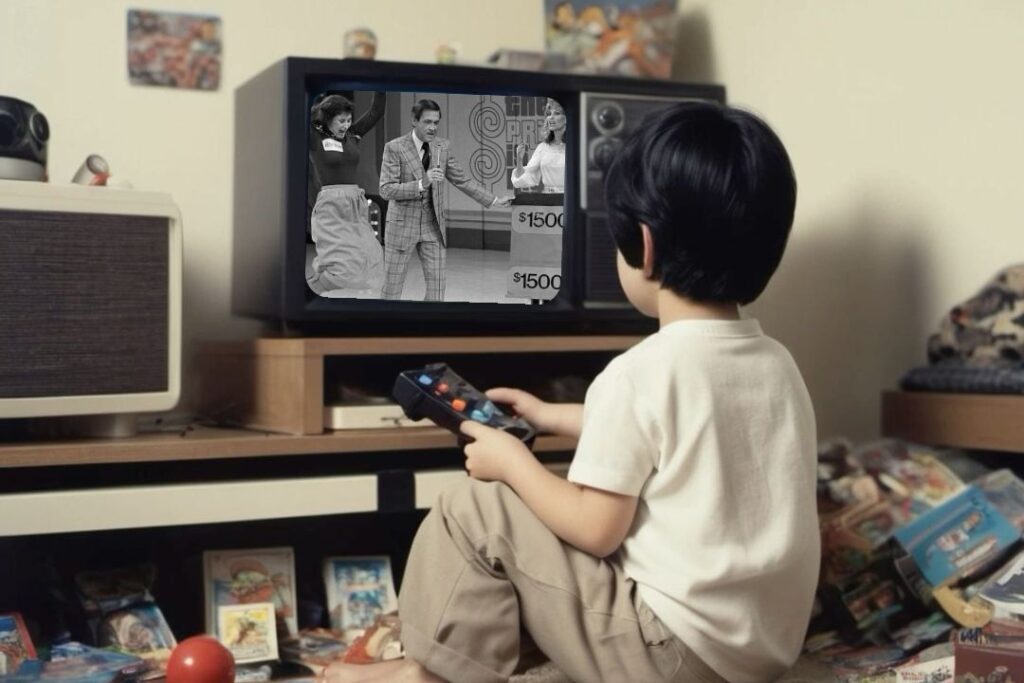
While classmates struggled with long division and spelling tests, the sick kid had exclusive, secret access to the fascinating world of daytime television. The schedule was sacred: The Price Is Right with the reassuring, gentle voice of Bob Barker was a morning staple, followed by the absurdity of Match Game or reruns of old sitcoms. This specific soundtrack of game show jingles, audience applause, and predictable laugh tracks became deeply intertwined with the memory of convalescence. For a child, this programming was adult, captivating, and slightly forbidden, providing an endless, low-stakes distraction. The sheer amount of time spent watching created an intimate relationship with these shows, making Bob Barker’s voice the unofficial, comforting announcer of your temporary withdrawal from the structured outside world.
11. Cartoons Felt Forbidden and Luxurious
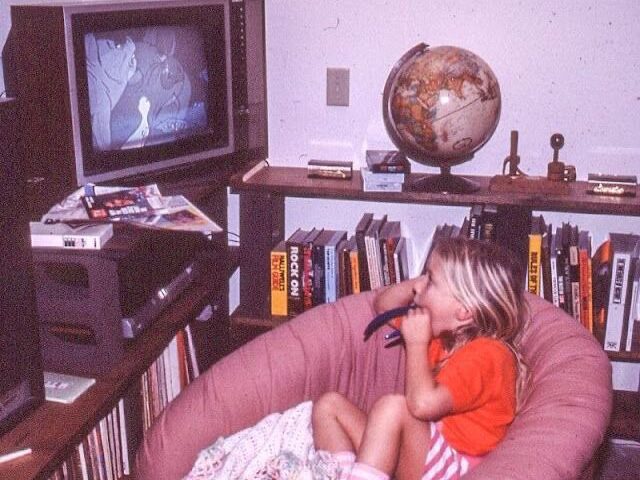
On a normal weekday, the television was dedicated to school-day programming until the late afternoon. Being home sick, however, granted a child secret access to cartoons that aired during regular school hours—a rare and luxurious perk. While the amount of daytime cartoon programming was less extensive than on Saturdays, the unexpected sight of a character like Bugs Bunny or Scooby-Doo while everyone else was in class felt deliciously decadent. It was a unique, fleeting indulgence that made the minor discomforts of being ill seem worth it. This secret viewing felt like unlocking a hidden level of childhood, a break from the tyranny of the school bell that few children got to experience. The quiet satisfaction of this privileged access added a subtle layer of entertainment to the slow, boring hours of a sick day.
12. Soap Operas Became Background Mysteries

After the game shows ended, the dramatic, confusing world of soap operas took over the airwaves. Shows like Days of Our Lives or All My Children filled the afternoons with tangled plots, whispering secrets, and over-the-top emotional crises. The complex plot twists, adult themes, and endless cast of characters often made little to no sense to a sick child who was drifting in and out of sleep. Nevertheless, the melodrama was utterly mesmerizing. It was like peeking into a strange, heightened grown-up world that they weren’t supposed to see, full of sudden revelations and passionate declarations. The faint sound of dramatic organ music and intense dialogue served as an odd, captivating background hum, a curious contrast to the quiet reality of the sick room.
13. Old Reruns Stitched the Day Together

The bulk of the afternoon was often filled with a steady rotation of familiar, comfort-inducing sitcom reruns. Shows like Gilligan’s Island, Bewitched, and I Dream of Jeannie were staples of syndicated programming. These shows, which had achieved massive popularity in their initial runs, offered a perfect form of entertainment for a low-energy viewer. Sick kids dozed in and out as the familiar laugh tracks and predictable plotlines filled the house. The comfort came from the repetition and certainty: you knew how the episode would end, and the familiar characters required no mental effort to follow. This reliable, lighthearted programming served as a soft, comforting presence, providing a sense of stability and normalcy when the child’s own body felt anything but normal.
14. The Sound of the Vacuum Reminded You of School
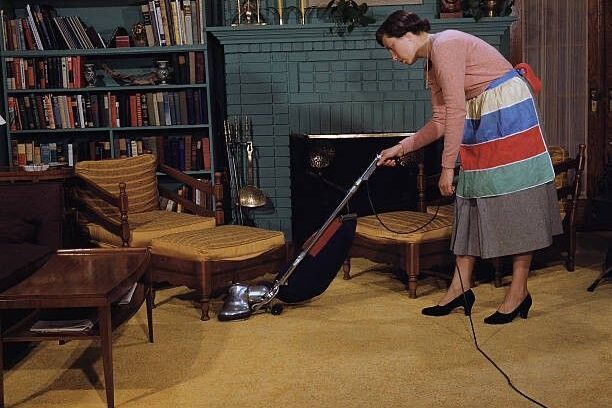
Moms, often finding themselves with a rare, quiet day while the children were at school, frequently used sick days as an opportunity to deep clean. The house, otherwise hushed, would suddenly be filled with the sound of the vacuum cleaner’s whir, the clatter of dishes, or the sharp scent of cleaners like Pledge or Lysol. For the child on the couch, this activity was a paradoxical sensory reminder. The noise and activity reminded them that life moved on, even while they lay still. The smell of the cleaners and the sound of domestic productivity were an unmistakable sign of the adult world at work, creating a strange juxtaposition with the child’s own state of restful inertia. It was a gentle, aural nudge that their time as a patient was temporary, and the regular rhythm of the household would soon resume.
15. Cough Drops Doubled as Candy
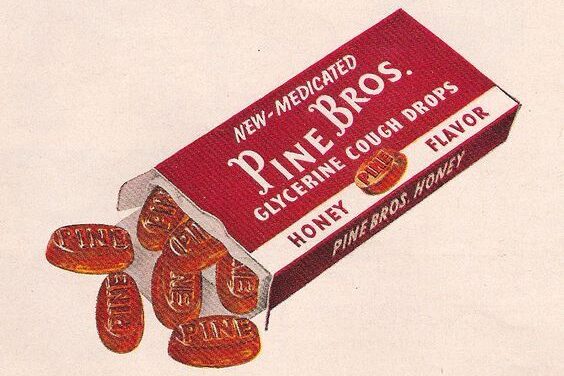
The small, individually wrapped lozenges offered a dual benefit: soothing a raw throat and providing a much-needed sweet treat during an otherwise bland day. Classic flavors like cherry or honey were slow-melting and flavorful, tasting good enough for a child to sometimes pretend they needed “just one more.” Historically, cough drops have roots in simple hard candy, and their sweet base made them an enjoyable form of medicine. They became a guilty pleasure, a permissible form of sugar intake that parents could rationalize as therapeutic. The drops, often sticking to lips and fingers with a thin, sugary residue, were treasured during boring stretches of the day, transforming a necessary medicine into a small, sweet reward for enduring the boredom and discomfort of illness.
16. Electric Heating Pads Offered Cozy Relief
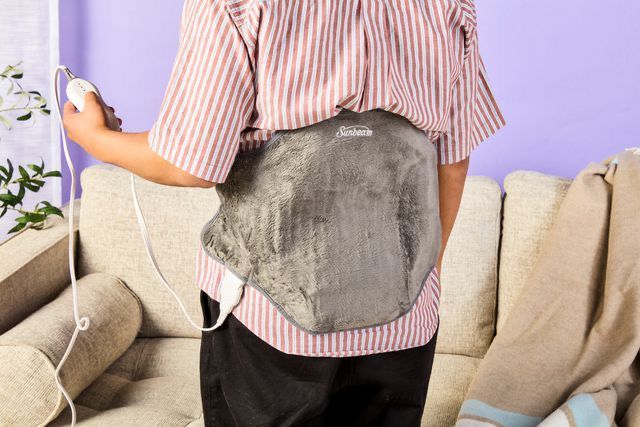
The electric heating pad, often covered in a flannel-like cloth and connected to a wall outlet via a long, thick cord, was a staple of the sick-day arsenal. These pads were deployed to soothe a variety of aches, from stomach cramps to back pain, by radiating a consistent, adjustable warmth. The principle behind heating pads, which use dry heat, is that the warmth can increase blood flow and relax muscles. For a sick child, the slow, steady warmth was profoundly comforting, an immediate encouragement for a nap. They often hummed with a quiet, low-level buzz, a sound that quickly faded into the background as the heat worked its magic. This simple, reliable piece of technology became an agent of tender care, a reminder that even appliances could offer a quiet, restorative authority.
17. Schoolwork Waited, But Not Today
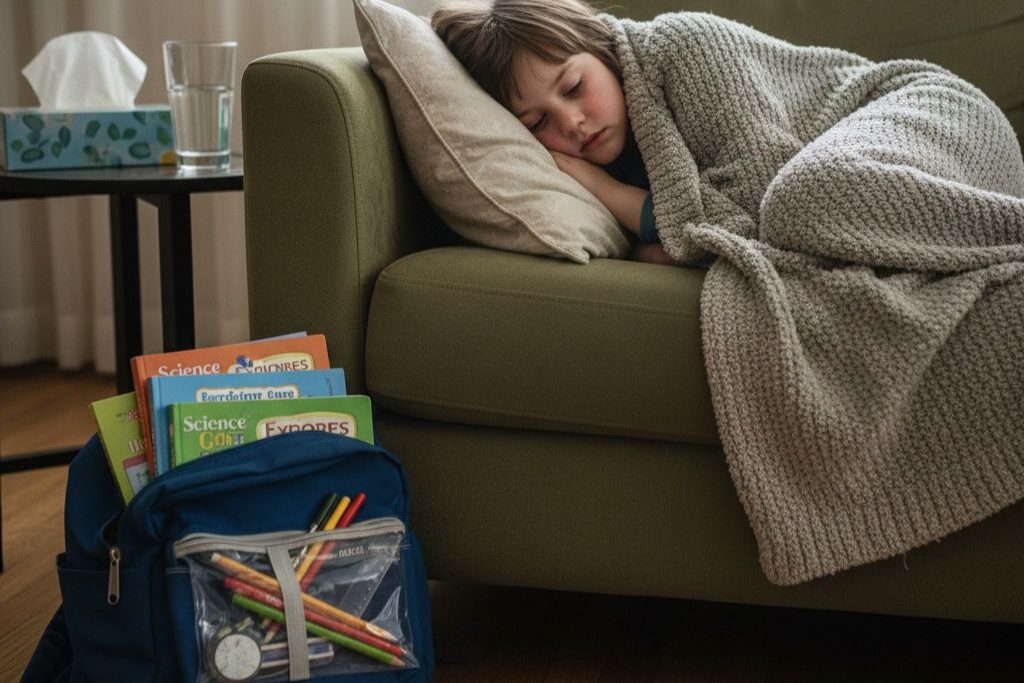
The sight of the backpack sitting in the corner, containing untouched textbooks, pencils, and the day’s missed assignments, was a silent testament to the freedom of a sick day. Homework sat in wait, but for a precious few hours, there was no pressure to study or drill arithmetic. Teachers would follow up later, and a classmate might eventually drop off a packet of missed work, but the rule for the day was simple: rest. Sick days suspended all academic responsibility, granting children a rare, sanctioned break from the relentless structure of spelling tests and classroom drills. This temporary freedom was a major component of the special quality of the day, a mental vacation that allowed the mind to slow down and match the body’s need for genuine rest and recovery.
18. The House Felt Oddly Empty

With parents often at work and siblings at school, the home could take on an uncanny quality of quiet. Hallways seemed longer, rooms more still, and the usual hustle and bustle was replaced by a profound daytime hush. This stillness was particularly noticeable in the suburban homes of the 1970s, where the lack of daytime noise was unusual. While this emptiness contributed to the feeling of being “special” and cared for, it also carried a hint of loneliness. The house itself seemed to recognize and enforce the need for quiet, as if the space were gently asking the child to heal without distraction. This unique, quiet atmosphere became an indelible backdrop, making the eventual return of family members in the evening a welcome, comforting event.
19. Sick Notes Were Part of the Ritual

Before returning to school, a key step in the sick-day ritual was the production of the absence note. Parents would often scribble an excuse on notebook paper or fill out a preprinted slip provided by the school. This physical piece of paper was the final, official documentation of the time away. Returning to the classroom meant handing over this proof of absence to the teacher, a brief but official transaction that symbolized both the period of withdrawal and the reintegration into the classroom routine. This required slip of paper affirmed the legitimacy of the illness and was the final required step to move past the missed day. It was a small but necessary bureaucratic handshake that allowed the child to transition back from patient to pupil.
20. Tissues Piled Up Like Snowdrifts
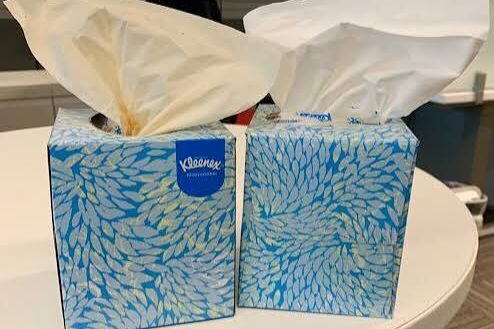
The Kleenex box—often a colorful design sitting on the edge of the couch—was perhaps the most used accessory of the sick day. As the hours passed, the box would visibly shrink as wadded, used tissues began to accumulate. The volume of this refuse was a visual indicator of the day’s struggle, a soft tide of paper that collected in trash cans and sometimes spilled onto the floor. Some brands were favored for their added lotion to protect a raw nose, a small detail that felt essential by the end of the day. By dusk, the child’s nose was often red and raw from constant wiping, but the tissue box remained a constant, necessary companion to every cough, sneeze, and sniffle, a gentle, disposable tool in the fight against congestion.
21. Fevers Made the World Feel Surreal
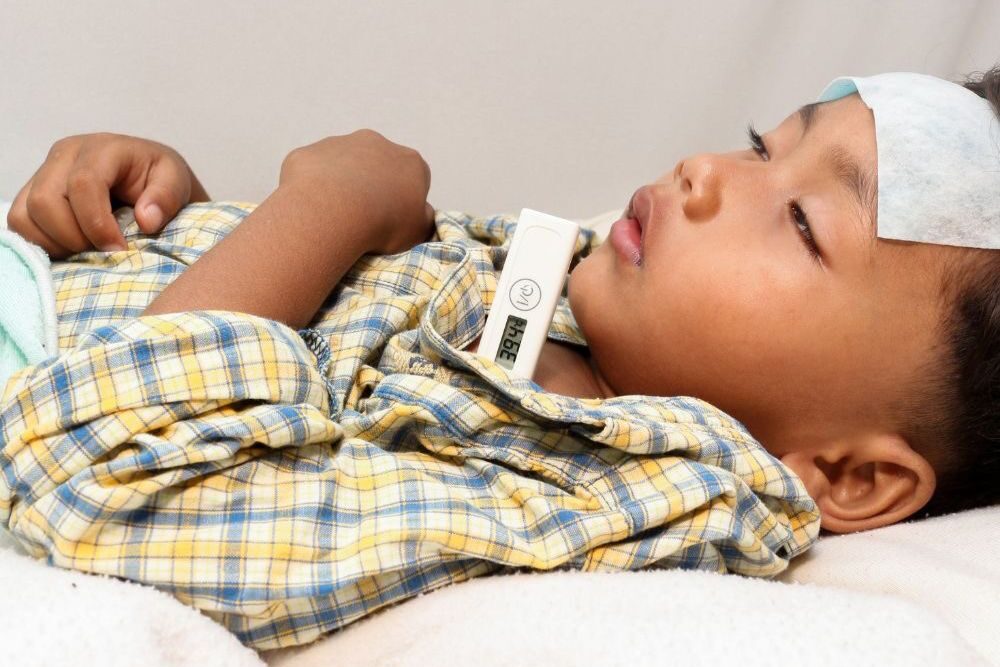
For children, a significant fever could be a disorienting, isolating experience. Sweat often dampened pillows, shadows cast by the afternoon sun danced on the walls in strange, unsettling ways, and the line between dozing and dreaming blurred completely. The mild delirium made ordinary hours stretch into hazy, dreamlike eternities, where sounds seemed louder and reality felt slippery. Kids drifted in and out of sleep, often unsure of the actual time or day. This surreal state, while uncomfortable, was an intense sensory memory, adding a layer of drama and unreality to the quiet confines of the sick room. It was the physical climax of the illness, a state the body had to pass through before true recovery could begin.
22. Moms Checked In With Quiet Tenderness

Throughout the day, even while managing the household, the mother would make steady, quiet check-ins. She appeared with a cool, damp washcloth for a hot forehead, a fresh cup of water, or a replenished supply of soup. Whether she was focused on vacuuming in the next room or cooking dinner, she always circled back to tuck blankets, fluff pillows, or gently smooth hair away from a sweaty face. This steady, non-demanding care was the foundation of the sick-day experience. It wasn’t just about administering medicine; it was about the continuous, physical expression of love and safety. This reliable, quiet tenderness, often communicated without many words, was the essential ingredient that made a lonely sick day feel utterly secure and protected.
23. Dads Brought Surprises After Work

The long, quiet day reached its turning point when Dad finally came home from work. Walking in with his briefcase or jacket still on, he often brought a small, unexpected surprise. Sometimes it was a comic book, a candy bar purchased on the way home, or just an extra-warm smile and a quick, gentle lean over the couch. This gesture was a welcome break in the solitude, a clear signal that the family unit was whole again. Dad’s presence, along with the promise of a regular family evening, made the sick child feel remembered and special after the long, quiet hours of daytime recovery. It marked the end of the day’s isolation and provided a final dose of emotional care.
24. The Return to Health Felt Triumphant
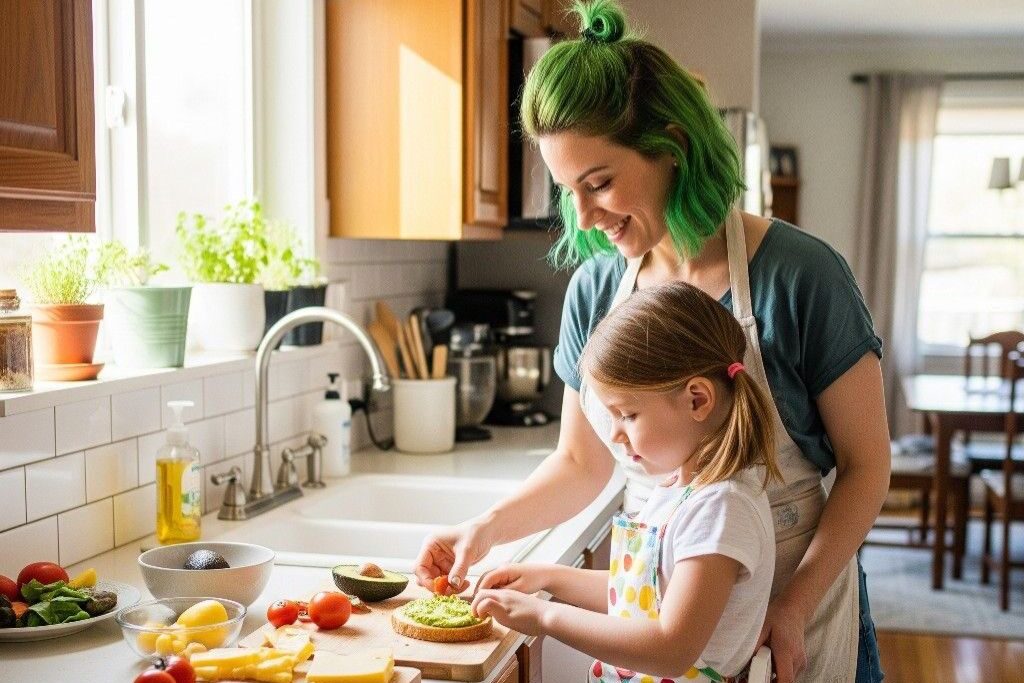
The final chapter of the sick-day saga was the glorious morning when the sickness had officially broken. One day, you simply woke up without the aches, hungry for something substantial, and ready to move. The physical fog that had settled over the previous days had lifted, pajamas were happily traded for regular clothes, and the colors of the outside world seemed brighter and sharper. This return to health was a profoundly victorious feeling. It felt like a small personal rebirth, a tangible proof that you had endured the discomfort and were now stronger. This moment of transition, stepping back into the normal flow of family life and routine, marked a clear and satisfying end to the time of rest.
25. Sick Days Were as Much About Comfort as Cure
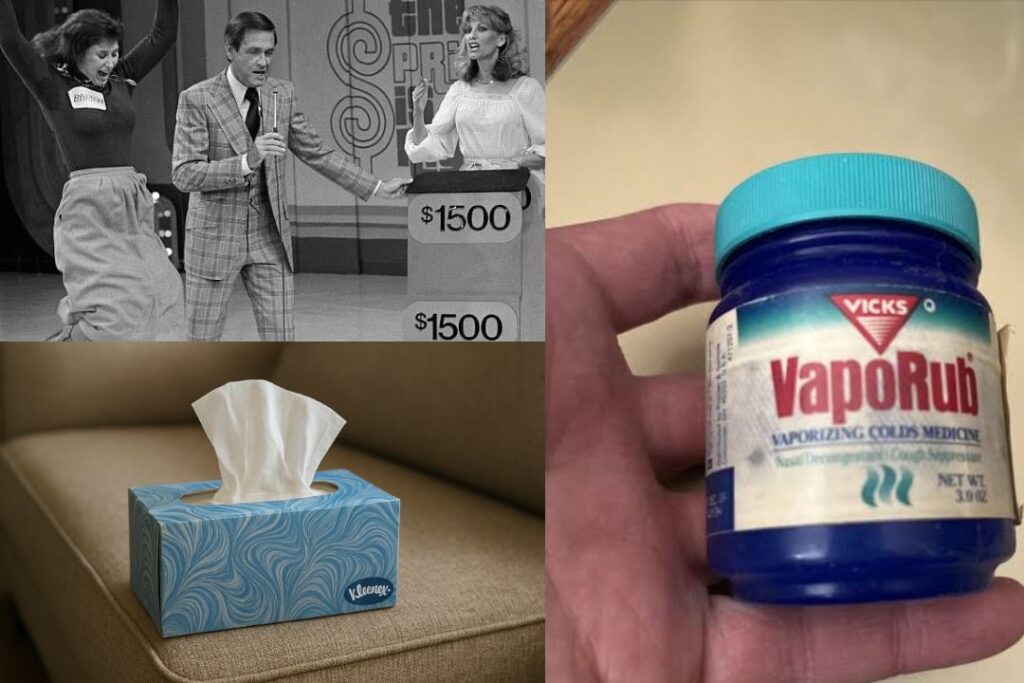
Ultimately, the collective memory of the 1970s sick day transcends the individual ailments. They were a sensory collage of soup and saltines, the gentle drawl of Bob Barker, the strong scent of Vicks, and the ever-present, soft pile of Kleenex. These days weren’t merely interruptions to the normal schedule; they were brief, tender respites from the world. They were memories stitched into the fabric of childhood as potent reminders of home, family, and the unique, unconditional comfort of being cared for by a watchful parent. It was a temporary, slower world that fostered a feeling of security and love, making the sick day a strangely cherished part of growing up.
Did this list of Vicks and The Price Is Right transport you back to the couch of your childhood? Which of these forgotten rituals instantly brought back the smell of menthol? Share your favorite 1970s sick-day memory in the comments below!
This story Tissues, Vicks & The Price Is Right: 25 Memories of 1970s Sick Days was first published on Daily FETCH


